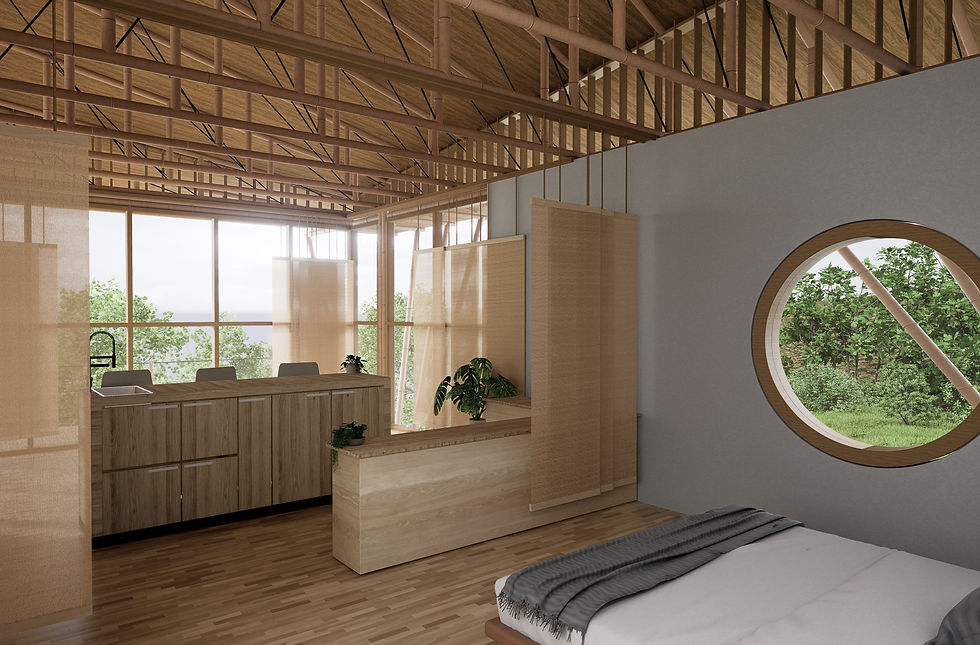Archiformus Expands to Nepal: Sustainable Architecture for a Greener Future
- Geetika Khatri

- Feb 18
- 3 min read
Updated: Feb 19

As the global climate crisis accelerates, architecture must take center stage in mitigating its impacts, not only by designing for resilience but also by embracing sustainability as a core principle.
At Archiformus, we are deeply rooted in mindful and sustainable design. We believe in creating buildings that harmonize with their environment while fostering cultural identity.
With this philosophy as our guiding light, we are embarking on an exciting journey to establish a branch in Nepal, a country that is close to our hearts but facing urgent environmental and cultural challenges. This is where we are needed the most, and we are committed to making a difference.
The Urgency of Sustainable Architecture in Nepal
Nepal is at a critical juncture, with widespread use of concrete and fire-baked bricks leading to increased carbon emissions and erosion of cultural identity.
The impacts of global warming are evident, with melting glaciers threatening ecosystems and rising pollution levels in cities like Kathmandu.
Nepal urgently needs a paradigm shift toward architecture that mitigates its environmental footprint and honors its cultural heritage.
Bridging Knowledge and Skills: A Collaborative Approach
At Archiformus, we recognize that meaningful change begins with collaboration and teamwork. Our new branch in Nepal will bring together the expertise of our German team and the local knowledge and skills of a small yet dedicated Nepali team. By integrating modern techniques tested across the world with local materials and craftsmanship, we aim to develop architectural solutions that are both innovative and contextually grounded.

The Power of Contextual Design
A core tenet of our philosophy here at Archiformus is that every design must respond to its context and site. This principle is especially vital in Nepal, where climate, topography, and seismic activity demand careful consideration.
We will prioritize the use of materials that generate minimal carbon emissions and contain no toxic chemicals. The materials we choose must not only be environmentally friendly but also evoke warmth and comfort.
Local materials will take center stage, demonstrating that they are not relics of an outdated past but modern resources capable of creating chic, contemporary spaces.
By employing advanced techniques, we will show that natural materials can meet global standards of quality and resilience, while also contributing to earthquake-resistant construction—an essential consideration in Nepal. Our projects will also focus on passive design strategies, ensuring the building harnesses natural elements like sunlight and wind to minimize reliance on artificial heating and cooling systems.
Redefining Modernity with Local Materials
A significant part of our mission is to challenge the perception that local materials are primitive or inferior. Through thoughtful design and meticulous execution, we will prove that buildings crafted from these materials can be as sophisticated and visually striking as any concrete structure, if not more so.
Our designs will showcase the aesthetic and functional potential of materials like bamboo or mud, for instance, when paired with cutting-edge techniques. By doing so, we hope to inspire a new appreciation for these resources, reinforcing their value in both traditional and contemporary contexts.
Marketing Sustainability: A Building That Speaks
The success of our projects will not be measured solely by their environmental impact or aesthetic appeal. To catalyze a broader movement, we must effectively communicate their value to the world.
Each project will be a living, breathing advertisement for sustainable architecture, designed to capture attention and spark conversation.
Through strategic marketing, we will highlight the benefits of using local materials and passive design principles, demonstrating that sustainable architecture is not only environmentally responsible but also visually compelling and culturally enriching.
By showcasing these projects, we aim to shift public perception in Nepal and beyond, proving that sustainable design is the future of architecture. This will involve engaging with local communities, policymakers, and industry professionals to build awareness and momentum for change.
A Vision for the Future
Our work in Nepal will serve as a blueprint for sustainable architecture in the region, paving the way for larger-scale projects that prioritize environmental stewardship and cultural integrity. Each building we create will be a step toward redefining modern Nepali architecture as a harmonious blend of tradition and innovation. By combining German precision and expertise with Nepali craftsmanship and contextual understanding, Archiformus will contribute to a future where buildings are not just structures but symbols of hope and progress.
As glaciers melt and cities like Kathmandu grapple with rising pollution, the need for sustainable architecture has never been more urgent here. At Archiformus, we believe that architecture has the power to transform societies and heal the planet. Our journey in Nepal is not just about building structures; it’s about being part of a movement. Together, we can create spaces that honor the past, enrich the present, and protect the future.



Comments